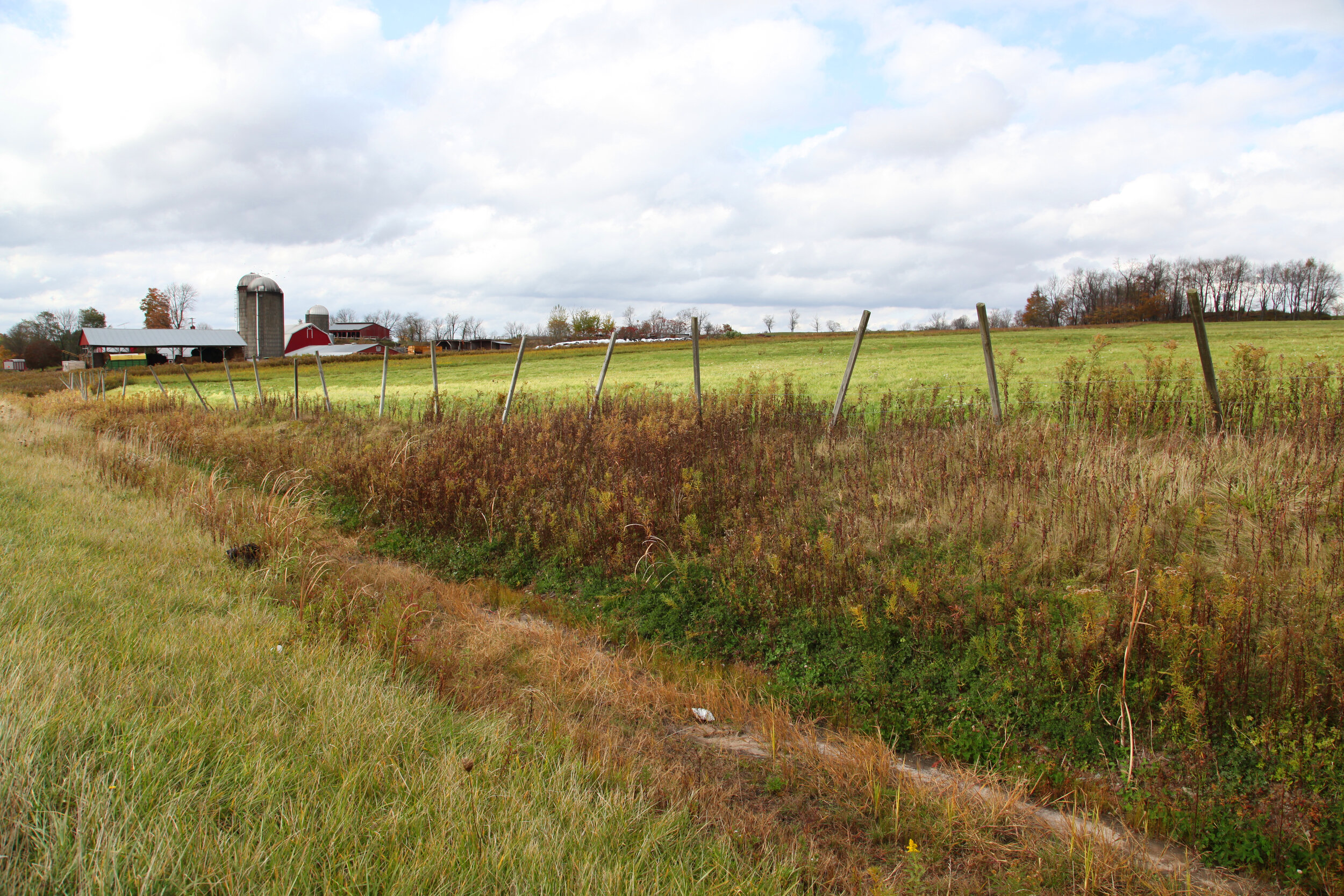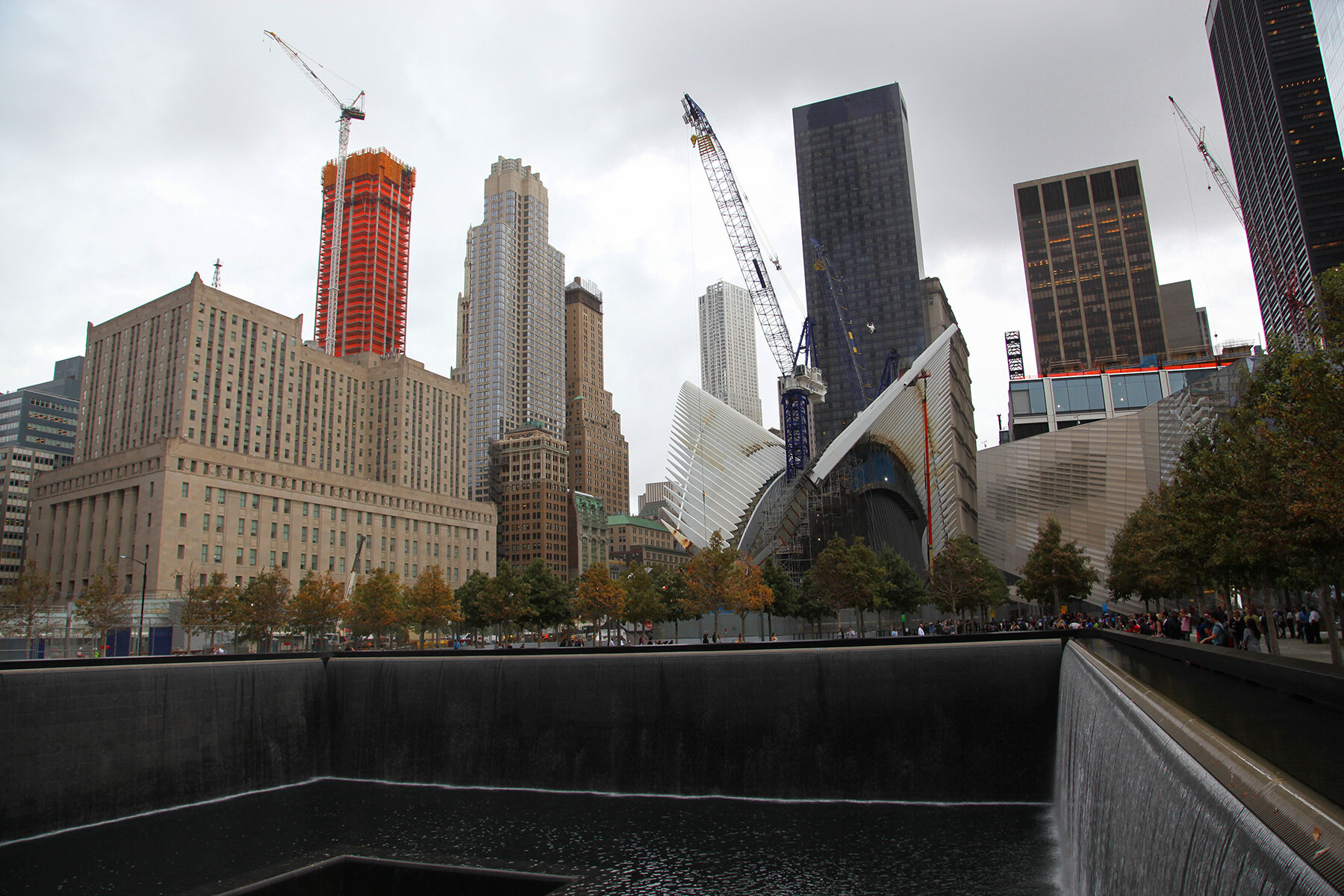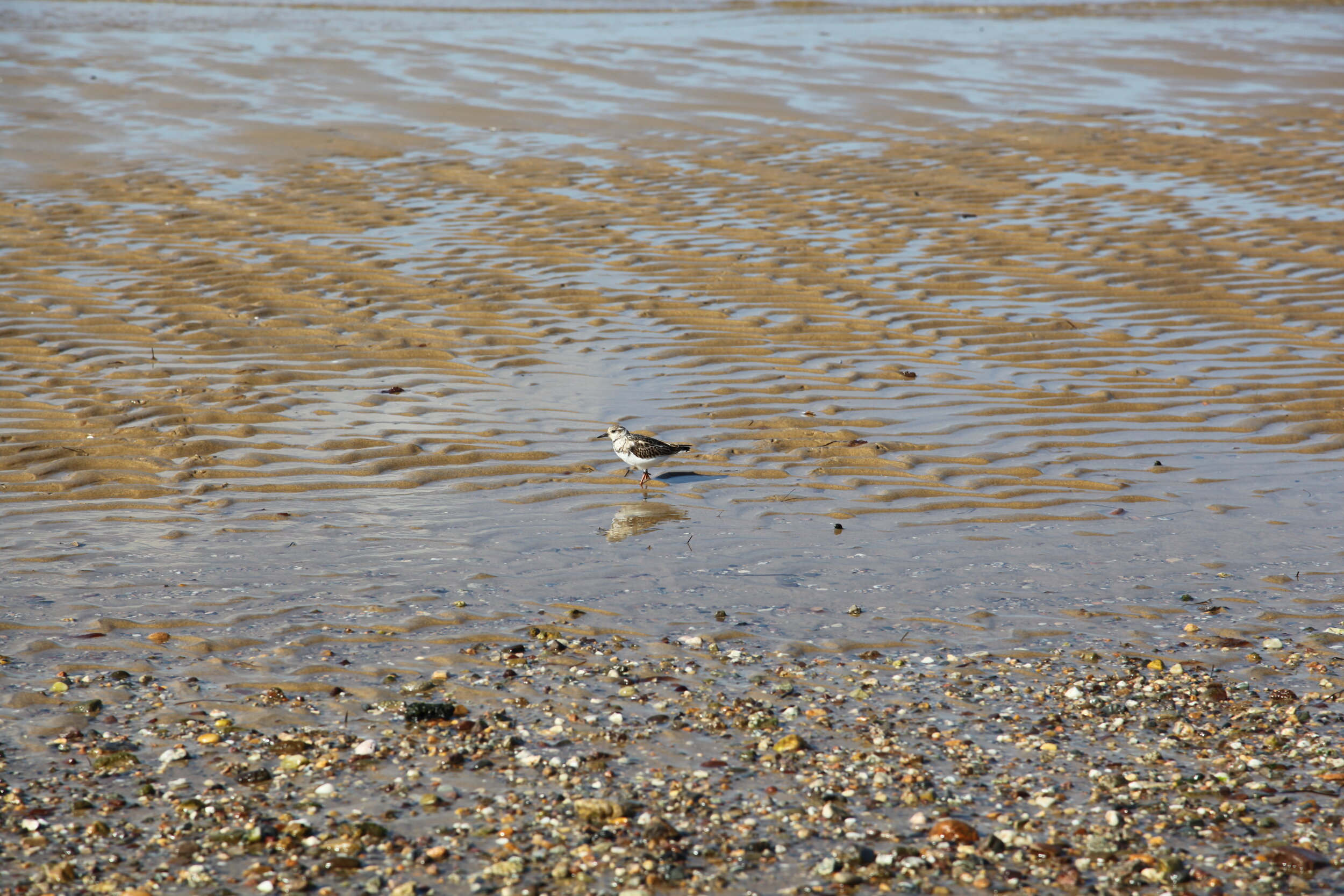2 | Back to the Big Apple
Day 1: Every big adventure needs a starting-off point. Mine was at the Brooklyn home of my life-long friend Peter Hultberg and his wife Marilyn, in October 2014, where I set up base camp for my first 10-day expedition, accompanied by my wife Marilyn (yes, two Marilyns!). The itinerary was sufficiently ambitious—five interviews in seven days—including some 800 miles of driving between upstate New York and Brooklyn, out to Long Island, and then northeast to Cape Cod and back. I planned just enough time for social visits, balanced with those first set of interviews with key founders of the Gate Hill Cooperative: Vera Williams, David Weinrib, Johanna Vanderbeek, Pat Apatovsky, and Betsy Williams.
I have always considered myself a New Yorker. After all, one does not have to be a city kid to say that. Although I grew up at Gate Hill (aka “The Land”), surrounded by thousands of acres of woodland hills and forests, we only lived 30 miles north of Manhattan and I had many opportunities as a youth, and later into adulthood, to get a good taste of city life. But after living in Colorado for almost 30 years, any trip back to the Big Apple is a mixed bag of readjustments and emotions. I felt this especially when Marilyn and I met up with our son Zack and his girlfriend Saoirse, recently transplanted from Boulder, Colorado, to DUMBO, and we walked along the East River and down by the historic Brooklyn Bridge, with its majestic view of south Manhattan. From that vantage point one gets a completely different sense of Manhattan Island and the newly completed Freedom Tower. In fact, when we visited, the building was still three weeks away from its official opening, such a potent reminder of the tenacity of that City’s inhabitants. How quickly I got misty eyed. Yeah, I guess I’ll always be a New Yorker… at heart.
• Click/tap on any image to enlarge/view photo credit •
All photographs © Mark Davenport (except as noted)
Later that evening we gathered at Peter and Marilyn’s for a mouth-watering, sauce-dripping, Bar-B-Que. If there is one thing we Land kids all have in common it’s our love for delectable fare. While John Cage, M.C. Richards, and David Tudor may have dazzled us with their imported spices and mycological forays, we had plenty of other culinary role models, from Sari Dienes’s asparagus and wild watercress to Vera Williams’s infamous sticky buns, and we soon formed our own little circle of budding bon vivants. Peter Hultberg undeniably follows in that gastronomical tradition (his parents are Paul and Ethel Hultberg, part of that early group of Gate Hill founders). Gate Hill members later joked (maybe it wasn’t a joke) that one of the first requirements for community membership is having an immense enjoyment and appreciation for good food. Amen!
Other dinner guests included childhood friend Aaron Morrill and his wife Liz, Merce Williams (son of Paul and Vera Williams who both spearheaded the Coop’s first years), and Harry DeWees, whose father Dan (one of Paul Williams’s closest compadres) figures prominently in the construction of the early Gate Hill homes. It was a fitting intergenerational assemblage for such a send-off, expressing devoted bonds of friendship for over half a century.
Day 2: The next morning I headed up on my own to the small hamlet of Narrowsburg, in Sullivan County (about a three-hour drive upstate), to spend a few days with Vera Williams. Along the way I got treated to the unequaled northeast fall colors, still very much in bloom. One particular field, with its scattered rolled bales of hay, beckoned me to pull over on the side of the road long enough to admire the landscape, and to take a few photos. I was reminded of Monet’s impressionistic series of haystacks, all painted at different times of the year. What would this field look like at sunset I wondered? Well, maybe I can stop on my way back and take another photo from the same spot… or maybe there was another reason I was summoned to this meadow—Max Yasgur’s Farm—really? I had known the iconic Yasgur’s Farm was in the town of Bethel, and there I was. It turns out I had been there before, perhaps on that very location, 45 years earlier when I attended the Woodstock Festival, drawn there as a thirteen-year-old by a field of psychedelic rock bands. Now I had returned, drawn there instead by a field of psychedelic foliage. Far-out! Back then, I shared the experience with my friends Kevin and Merce. Yup, the same Merce whose mother I was on my way to see that afternoon. I do love those moments of serendipity.
• Click or tap on any blog image to enlarge •
But I digress… on to Vera’s house. Vera and my mother Patsy were college roommates at Black Mountain College, and I knew that the more time I could spend in company and good conversation with Vera the better, and that turned out to be the case. After leaving Gate Hill, in the early 1970s, Vera moved to Vancouver where she lived in a houseboat and taught at an alternative school. There she illustrated her first children’s book, in collaboration with dancer Remy Charlip, signaling the start of her lifelong dream of becoming a children’s author. When Vera moved back to the States she settled in downtown Manhattan and became, just as in most of her childhood years, a city dweller.
Later in life she yearned, once again, for the peace and solitude of country life and found a quaint small-town home in Narrowsburg, along the banks of the Delaware River. That’s where I finally reconnected with her that Sunday afternoon. As it turns out, Vera recalls coming upstate for summers with her parents when she was a youngster. “We have pictures of us up here in various lakes where radical leftists used to go,” she told me. “One summer we even stayed in Ellenville, which is not far from here. So we knew the area.” Vera’s backyard gently rolls down to one of the most tranquil sections of the Delaware, with a quiet launching area for canoes or kayaks. In the front of the house Vera proudly showed off her display of flowers.
Once settled in our chairs, we found ourselves consumed in deep discussion, only interrupted several hours later by nudging pangs of hunger. I offered to fix dinner, while she sipped her Bushmills, a hearty meal of pasta Bolognese, garlic bread and a mixed salad, tossed in a simple mustard vinaigrette. We both needed the sustenance and still had a lot of talking to do—what ended three days later in many hours of recorded conversation.
I was in awe of Vera’s story, and in the precision of her vivid memory. At one point I asked her why she hadn’t written the Gate Hill history herself. The idea was certainly something she had seriously entertained. After a long pause she said, “Because I couldn’t be completely truthful.” It wasn’t the most satisfying answer at the time but one I have come to better understand as I begin to synthesize our multifarious lives. After all, we’re talking about our own families and dearest friends. I think that’s why I’ve chosen not to write a memoir but rather a history, and unlike Vera, I was not yet born during the Black Mountain College years, and only a child during the first decade of the Gate Hill Cooperative. I think I’m just far enough removed from that first generation, yet still hold firsthand knowledge of the people who lived there, to provide a balanced objective—something I imagine struggling with throughout this process.
Day 3: The next afternoon Merce joined us. We had arranged to have him film part of the interview. He came up with his nephew William and set Vera up in front of a green screen. I’m glad he was able to more fully document some of that conversation. And he had the brilliant idea to have Vera recite one of her poems. She chose “Together Sing,” a work written just two years earlier, about a prophetic encounter with a small bird who had rested on the same railing of the house porch where her beautiful flowers now dwelled. In solidarity with this winged creature the two mourned the plight of the human race and its imposition on the natural world, vowing never to let despair be the final song of either species. The poem seems to gain more poignancy every time I read it, especially considering our current moment, the political climate, and a world-wide pandemic.
Together Sing (Vera B. Williams)
Resting for a moment on the porch railing
I sought with indelicate flutter of the layered leaves
Of the river birch
The apple seed eye
Of a small bird
Her neatly feathered gray head cocked
I cocked my whitened one
To meet hers
Well met
Well met
My own true love I greeted her
A profound unrehearsed regret
Breaking from me
My people
Speaking to hers
Sorry
Sorry
I’m sorry
My lament taking pattern from the thrum of her repeated call
My larger pulse
Beating to her tiny one
Sorry
Terribly helplessly sorry little bird
I spoke trembling
I fear
That my people are driving us all to the edge
You and I
You and I
You and I
And all the others
It could come about little bird that we humans
Have betrayed even ourselves
Befouling beyond hope
Nest
Cave
Hole
House
Borough
Earth
Air
Water
Blood
That our tribes will no longer enjoy
This rare round thicket
Of bi-species greeting
In rush of song
Generous song
Like an avian tear
A catch in the voice of that little bird
Sounded echo to my lament
Showing her species as kin to music
As our own
For is it not told
How Orpheus
Wandering madly in his loss
Silenced his lute
And all the birds
Fell silent in tribute
Mercifully
My small singer
Again opened wide her throat
Trilling the joy of the animate world
My heart
Relinquished its terror
Oh thank you
Thank you
Thank you fellow creature
For your birthright gift
How gratefully
My voice responds with her own beloved scale
Do re mi fa sol la ti do
Despair
Cannot
Must not
Will not be
Our final song
Vera passed away a year and two days after we visited together in her Narrowsburg home. For her memorial celebration at the Judson Church, Merce created a short film that includes this delivery of her poem, juxtaposed with black and white images of us kids at the Land, filmed by Johanna Vanderbeek in the early 1960s. The dreamy imagery and recitation provided a profound moment for the large gathering of family and friends there that day.
Day 5: On my way back down to Brooklyn I picked up Marilyn at her friend’s house in Stamford and she joined me the next day, exploring the streets of lower Manhattan, while I interviewed David Weinrib at his Chelsea home on W. 23rd Street. David had just celebrated his 90th birthday and seemed in a particularly animated and upbeat mood. Not big on dates or chronology, David instead offered enough colorful and anecdotal stories to fill a book. He and his first wife Karen (Karnes) had been “artists-in-residence” at Black Mountain College before being enticed (especially by M.C. Richards) to join the community in the summer of 1954. David helped with the construction of the pottery at Gate Hill before being joined by Karen later that summer. They both moved into the small existing farmhouse on the property with M.C., David Tudor and John Cage (who occupied the attic).
David’s career as an artist is something of an enigma. His work at Black Mountain College was mostly in slabs of unglazed colored clay, work he continued at Gate Hill, where he was commissioned to produce a series of beautiful tile installations, in addition to his large output of pottery and table planters (I remember almost every house at the Land having one). But I’ll always remember him best for the three-dimensional bas-relief, with fired clay inserts, that adorned the front cinderblock façade of our family home at the Land. David designed and mounted the “mural” shortly after we moved there in 1956. That’s my little bedroom window to the left of the clay inserts. To this day the work embodies one of the unique elements that make up the identity of the “Upper Square.”
After an enlightening conversation David gave me a tour of his studio apartment, a dazzling and dense display of work, mostly from his later career, representing his move to bent plywood and acrylic plastic sculpture. I had barely had a chance to process our short visit when we needed to bid our farewells. That turned out to be the last time I saw him.
Just a few blocks east on 21st Marilyn and I hooked up to the High Line, a one-and-a-half mile long greenway that follows the old elevated rail on the west side of Manhattan. The trail is a spectacular way to sightsee that part of the City in the center of the old Meatpacking District. We decided to continue walking all the way down to the new One World Trade Center, ending up at the two Memorial Pools where the original Twin Towers once stood—Ground Zero. It’s a moving and somber experience. The mood was thankfully lightened when we met up with Zack and Saoirse for an exceptional tapas dinner at King Restaurant, on the corner of King St. and 6th Ave. Turns out both of our sons have inherited the required culinary inclination.
Day 6: Speaking of food (again), Johanna Vanderbeek was lured away from the Gate Hill community in 1976 when she moved to Amagansett, the popular East Hampton resort destination, drawn there by the opportunity to rent a small restaurant, which she opened with Shalom Gorewitz. “Two weeks after we opened we had three stars in the Times,” she told me over some coffee and danishes in her multi-colored home there. Johanna and her first husband, former Black Mountain College student Stan Vanderbeek, moved to Gate Hill in the early 60s with their two children August and Max. Until we spoke that afternoon I had no idea of Johanna’s close connections to North Carolina where, like her father, she was born in Asheville, her family home just across the street from the Noland boys (including the painter Ken Noland and sculptor Neil Noland), both of whom attended BMC in the 1940s. Johanna is a living encyclopedia of the 1950s and 60s New York art world and an artist in her own right, something that needs better illumination while she is still alive.
After a light lunch of Johanna’s delicious white fish and greens we headed across town to connect with Pat Apatovsky, first wife of photographer George Ancona who sadly passed away earlier this month (January 1, 2021). Pat and George came to the Land in 1962, with their three children, moving into the former Hultberg house, and next door to our family. Her story crisscrosses with a number of other Gate Hill members who attended Cooper Union School of Art in the 1940s and 50s. “I was very much into being an artist,” she remembers, and when the possibility of a house at Gate Hill opened up she was ecstatic. I was intrigued to hear that she had initially wanted to go to Black Mountain College, so she already knew of M.C. Richards, Merce Cunningham and Karen Karnes when they moved into the Upper Square. Her experiences at the Land were more bittersweet than others, and something shared with a number of the women at Gate Hill. For all its progressiveness, the community did not exist in a vacuum, and the challenge of the “60’s woman” having to balance or choose between their careers and their children was especially pungent in a community of artists where the men and single members (and even us children) all seemed to have greater freedoms.
As the day came to a close, we still had a five-hour drive to get up to our airbnb in Eastham, on the outer banks of the Cape. That meant scurrying to catch the next Ferry to Shelter Island and then a second Ferry to New London. We caught a breathtaking sunset as we crossed the Long Island Sound.
Day 7: There’s nothing like joining the sandpipers for a morning walk along the beach to recharge and take stock. Maybe because I grew up at the Land and spent literally every summer vacation at the Cape House in Wellfleet, Cape Cod continues to hold a special place for me. For decades the Cape House (built by Paul Williams, Stan Vanderbeek and others), became an extension of the Land. Our families all shared time there, often overlapping stays with other families and friends. The rustic 2-bedroom A-frame on the Bay side was always bustling with life and love. In the 1980s Paul and Betsy Williams winterized the house and the two moved in year-round. Paul Williams died there in 1993.
I spent a couple of days in my first set of interviews with Betsy, who attended Black Mountan College in 1952 (then Betsy Ann Weinrib) during the same time her older brother David Weinrib and sister-in-law Karen Weinrib (Karnes) were potters-in-residence there. Betsy studied photography with Hazel Larsen Archer and later joined the Gate Hill community as one of its early founders, with her first husband Arnold (Ep) Epstein. A largely marginalized figure outside the Gate Hill circle, I have taken it upon myself to preserve her work and reposition her place among the outstanding women artists at Gate Hill where for over a decade she documented our lives with her beautiful images, many of which will be featured in the forthcoming illustrated history. I can’t wait to share them with you.
Day 9: On our last full day at the Cape, before heading back to New York the next day to catch our flight back to Colorado, we were thrilled to find out we were smack dab in the middle of the 14th annual Oyster Fest in Wellfleet, which also marks the last week many of the hotels and tourist spots are open for the season. It’s always great to see the work of local artisans, hear some live music, and of course the oysters! They are almost as delicious as the beautiful Cape Cod sunsets!
Until our next adventure!
































